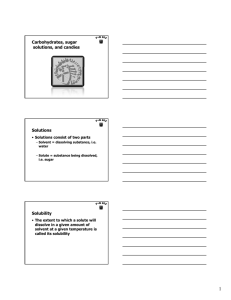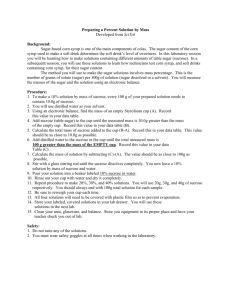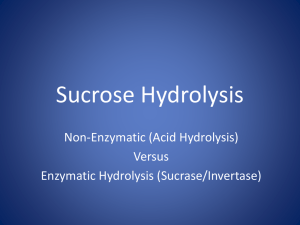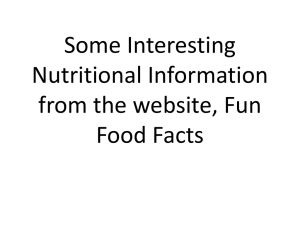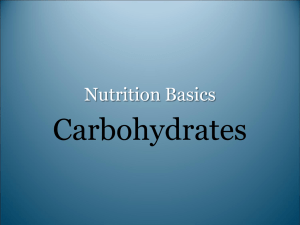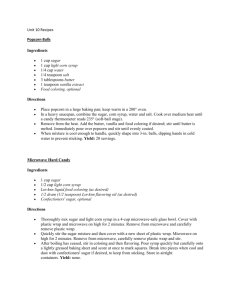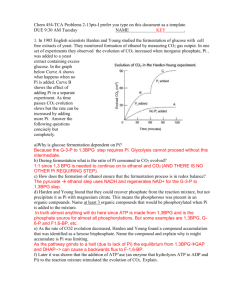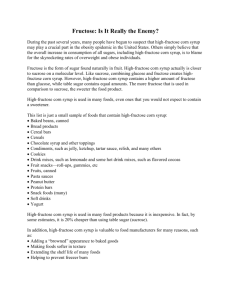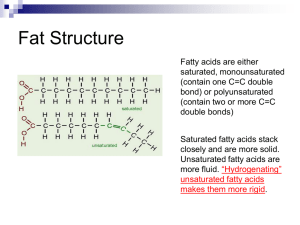The Chemistry of Candy - Mrs. VanSickle`s Classroom
advertisement
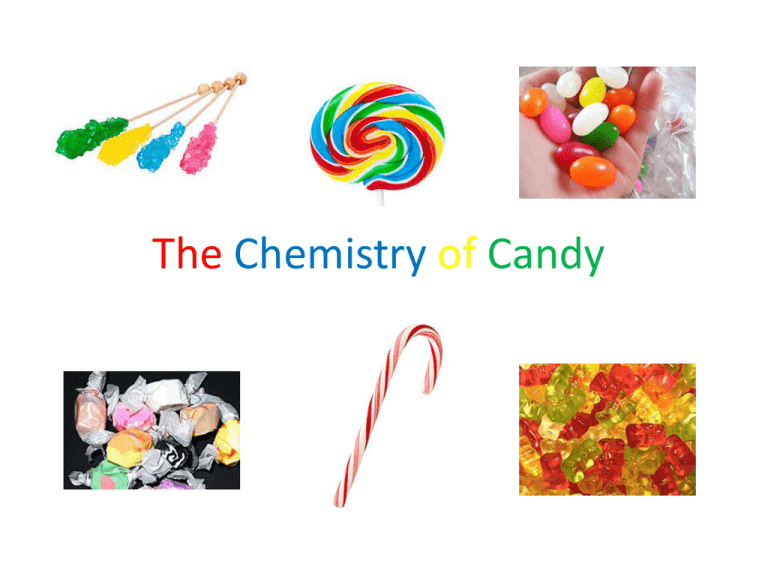
The Chemistry of Candy The Chemistry of Sugar (Sucrose) Carbohydrate – carbon, hydrogen, oxygen Disaccharide – glucose and fructose bonded together Inversion of sugar forms glucose and fructose Sugar is sweet Sugar is an instant source of energy for the body – sugar high Corn Syrup • Starch (a polysaccharide) from corn is broken down into smaller molecules including glucose making a viscous solution (syrup) • High fructose corn syrup is made from corn syrup by converting some of the glucose to fructose • Fructose is sweeter than glucose or sucrose • Problems with too much fructose – Gets converted to fat in the liver and can lead to heart disease – Can cause insulin resistance and lead to diabetes Forms of Candy Crystalline Glass Types of Candy and How They Are Made Rock Candy • Pure sucrose crystallized from a super saturated solution • Dissolve sucrose in hot water • Introduce seed crystals (of sucrose) • Cool • Formation of large crystals is slow process and requires the seed crystals Fudge • Mix together sucrose, corn syrup, butter and chocolate (or other flavoring) and heat • Allow to cool • Butter and corn syrup control crystallization giving large number of very small crystals Hard Candy – Lollipops, etc. • Glasses formed from sucrose plus glucose (dextrose) or high fructose corn syrup or by just heating with some acid (lemon juice) to invert sucrose • Heat sugars in water to make a concentrated syrup • Pour into molds • Cool • Liquid solidifies without crystallizing because of other sugars added to the sucrose. Taffy • Heat mixture of sucrose, corn syrup, flavoring, fat (butter) and water • Cool forming a sticky mass without crystals • Pull to introduce air further softening the candy Cotton Candy • Sugar is melted in a machine and forced out from a spinning head through nozzles by centrifugal force. • Molten sugar cools so rapidly it cannot crystallize and forms tiny threads of pure sugar. Carmelization • Sugar is heated so hot that it starts to form new compounds. • Some of them are amber in color. • Some of them impart a new flavor. Gum • Historically made from chicle, a natural gum from tree latex • Now made from synthetic polymers similar to those used in rubbers • Sugar for sweetening, and flavor added Gummies • Made from gelatin (like Jello) – Gelatin is a protein (polymer of amino acids) – Gelatin is made from collagen that comes from animal skins and bones. • Mix and heat gelatin, sucrose, corn syrup, coloring and flavoring. • Pour into molds • Cool

